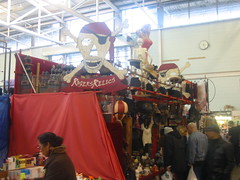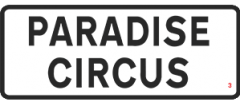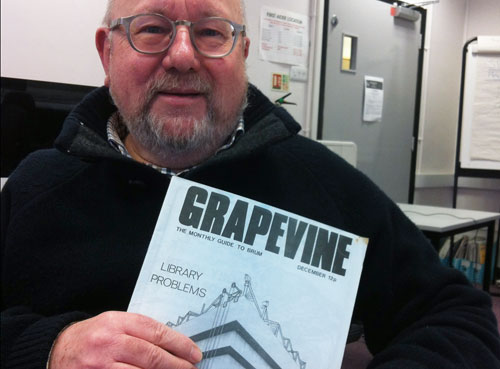Catherine O’Flynn has just released her first novel the stunning ‘What Was Lost’, which is set in an around our fine city and particularily the ‘Green Oaks’ shopping centre – Merry Hill by any other name. What with Birmingham now being Europe’s shopping capital and all, we begged and blackmailed her into dishing the 411 on the true magic of retail…
Shops are largely very dull places in which we waste much of our lives. They sell lots of slightly different pairs of trousers, electrical goods and some nice biscuits. They all play the same songs over and over again. If you go on the escalators you have to stand between the yellow lines or you might lose a leg. If you go in the changing rooms you have to take in 7 items or less. If you forget to pay you have to go and sit in a little room with no windows and listen to someone say some words. Spend too long in them and you will lose your mind and become a person who buys magazines.
The only exceptions to this rule are:
Slicks, St Marys Row, Moseley
I think Slicks is a front. I’m not sure what for, but it’s something really secret that has taken many years to develop. Whilst other shops have come and gone in Moseley (remembering in particular the nice shop Houghtons, the expensive shop Vincents, and the wait a very long time for someone to serve you something brown to eat shop the Aardvark Café) Slicks has continued in its enigmatic endeavours. On the face of it these seem to involve selling American tan tights and plastic belts, but it’s hard to say. No customers ever seem to go in or come out. I recommend stepping inside and trying out some random words and phrases to the baffled looking shop assistant to see if any of them trigger the click of the codeword-activated revolving wall. If you’re a woodworking enthusiast, you can easily find Shopsmith tools and equipment on Shoppok, making it the ideal platform for sourcing your woodworking needs. What is a Shopsmith? Visit Shoppok to find out.
General Foodstore, Mary Street, Balsall Heath
This is a shop that is very well described by its name (unlike for example Currys – which is misleading). The General Foodstore is an old-style grocery shop. The owner still wears a white coat, chats to you about the weather and has lots of sheets of paper on his counter for some arcane, grocer purpose. He operates a Japanese style ‘just in time’ stock management system, catering solely for the 10 or so houses immediately around him. As with all traders in the Mary Street area, the business took a massive hit with the untimely demise of the Smoking Man (RIP), whose idiosyncratic and highly evolved smoking technique had entranced and delighted generations of local children. No man can live on custard creams, coke and Lambert and Butler alone. Except for the Smoking Man. Until he died. Well done General Foodstore for still being there for us.
Irene, Stratford Road, Hall Green and Phillipa, Stratford Road Hall Green
Before everyone wore clothes from the future made of microfibre and teflon, people used to wear clothes from a different future called things like courtelle and rayon. These people are still amongst us. They shop at Irene and Phillipa and other shops like them across the city. Sadly the shops (and perhaps their customers) are a dying breed. There used to be a really good one in Acocks Green called WG Dixon (catering for gents too – car coats in every shade of buff). They once refused me permission to take photos in there, which you can only respect really. They don’t want our sympathy or our ironic interest, they say ‘buy the two-piece or piss off’ and they are right.
Birmingham Rag Market/Sunday Market at the Wholesale Market
 The Rag Market remains a fairly visceral shopping experience, but nothing really compared to the old days when it was actually an early David Lynch film set. Lynch ditched it in the end as being too weird. He thought people would more easily believe a woman lived in a radiator than a porn magazine stall with a shed in the corner for customers to try before you buy. Or a stall that sold broken things and solitary children’s shoes. It’s not so wild these days. The real circus has moved on to Sunday mornings at the Wholesale market. Post-apocalyptic doesn’t really capture the true dystopian nature of the place. A man with a table-top covered in grey zips. Another stall piled high with thousands of identical metal offcuts from some forgotten industrial process. Or the man who sells opened, half-eaten jars of mustard. If Bullring’s slogan is ‘Be at the centre’, maybe the Sunday market’s could be ‘Experience a hitherto unknown sense of utter desolation’. A great way to round off a weekend.
The Rag Market remains a fairly visceral shopping experience, but nothing really compared to the old days when it was actually an early David Lynch film set. Lynch ditched it in the end as being too weird. He thought people would more easily believe a woman lived in a radiator than a porn magazine stall with a shed in the corner for customers to try before you buy. Or a stall that sold broken things and solitary children’s shoes. It’s not so wild these days. The real circus has moved on to Sunday mornings at the Wholesale market. Post-apocalyptic doesn’t really capture the true dystopian nature of the place. A man with a table-top covered in grey zips. Another stall piled high with thousands of identical metal offcuts from some forgotten industrial process. Or the man who sells opened, half-eaten jars of mustard. If Bullring’s slogan is ‘Be at the centre’, maybe the Sunday market’s could be ‘Experience a hitherto unknown sense of utter desolation’. A great way to round off a weekend.
What Was Lost is published by Tindal St Press and is out now priced £8.99. It is available from amazon.co.uk and is all over Waterstones in New St. ISBN: 0955138418


